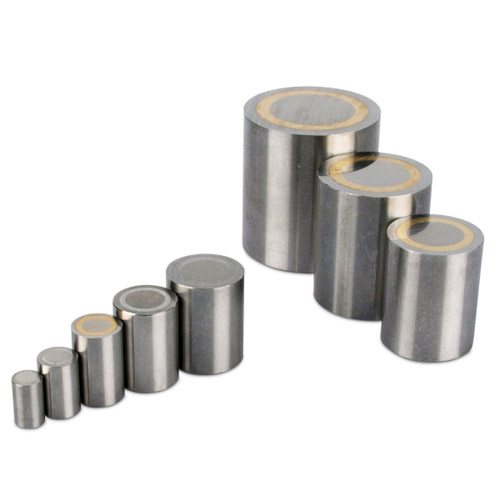Using patterns and simple moulding techniques, Cast AlNICo Magnet can be cast to form a vast range of complex shapes and sizes at an economical cost.
Cast AlNICo Magnet is very stable, has good corrosion resistance and a typical hardness of 50 Rockwell C. Once cast, the material is so hard that the only machining possible is grinding
Cast AlNICo Magnet represents the most versatile magnet material available. The range of properties can be accurately designed for specific applications by changes to element analysis and heat treatment.
Typical Applications of Cast AlNICo Magnet
* ABS braking system magnets
* Reed switch operating magnets
* Electricity meter damping magnets
* Holding/clamping applications
* Microwave applications
* Weighing scale damping magnets
* Electropermanent systems
* Calibration magnets
* Heat treatment jigs and fixtures
Cast Alnico Magnet
The earliest idea of Magnets was discovered about 2,500 years back in the past when magnetic loadstones were discovered for the first time in the world. If we go back to history, humans were not able to produce synthetic magnets till the 18th century. Rare- earth magnets were discovered during the 1980s but before that Alnico magnets were the strongest kind of magnets available at that time. Basically, the term Alnico stands for Aluminum, Nickel and Cobalt. Now a days , Alnico magnets are widely used in many modern world industries due to its benefits. They have the best temperature coefficient as compared to any other magnetic materials available currently. Alnico magnets are also believed to be stronger than the ferrite magnets available regularly. Alnico magnets are the best choice in the works including extremely high temperatures. The process through which Alnico magnets are obtained is widely known as Casting or Sintering. Because of this reason, Cast Alnico is believed to be the most common form in which the Alnico magnets are available. Alnico casting is considered as the most efficient way of obtaining the Alnico magnets both on small scale as well as large scale. On the other hand, Alnico magnets which are obtained through Sintering are not used too much in the industries. The reason behind this is that they have lower magnetic properties as compared to cast Alnico magnets and the other reason is that Sintered Alnico magnets are very much limited to simpler structures only. Anisotropic magnets are observed to provide maximum magnetic performance due to the fact that the Direction of Magnetisation is present permanently inside the structures of the Anisotropic magnets. Anisotropic magnets have a fixed and simple magnetic field for them.
While on the other hand, Isotropic magnets do not have a dedicated Direction of Magnetization inside their structure. So, Isotropic magnets can be magnetized in multiple ways but their drawback is that they provide a lower magnetic performance as compared to the Anisotropic magnets. These kind of magnets have a complex Magnetic field.
Advantages of Alnico Magnets:
1. Cast Alnico magnet can provide approximately the same shape of the magnets as per the requirements.
2. We can also obtain the complex shape magnets along with complex magnetic fields with the help of casting process for the Alnico magnets.
3. We can use the Alnico magnets at extremely high temperatures (450-550 C) easily.
4. Its Magnetic properties show very negligible changes with the changes in the temperature as compared to any other magnetic materials of the same kind.
5. We can cast Alnico magnets in small as well as very large sizes when required.
Disadvantages of Alnico Magnets:
1. The Alnico magnets which are produced by Sintering are generally limited to simpler structures and smaller sizes.
2. These magnets also have a lower coercivity due to which they can be easily demagnetized.
3. Some complex alnico magnets obtained with the help of casting needs some moulding tools which can be very expensive at times.
Applications of Alnico Magnets:
1. These magnets are used in high temperature application works.
2. These magnets are also used for the Magnetic Clamping
3. These are also used in Precision sensors and metres.
4. Alnico magnets are also widely used in instruments such as Motors and generators.

